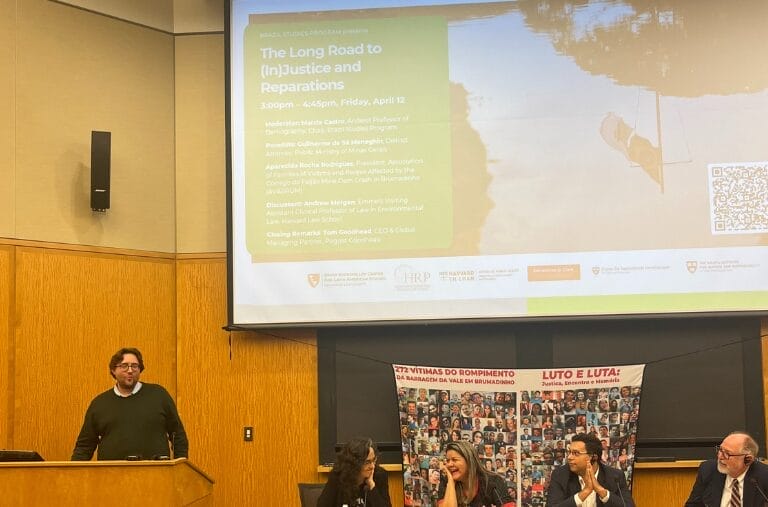How can you obtain a judgment without going to trial? While it may sound like a trick question, the English rules on Civil Procedure (the Civil Procedure Rules, “CPR”) provide a specific mechanism known as summary judgment (CPR 24).
Summary judgment is a discretionary power granted to judges to make a judgment on a claim or issue without going to trial.
Prior to exercising its discretion, the court must agree that the party against which judgment is made has no real prospect of success and that there is no other compelling reason the matter should proceed to trial.
The party seeking summary judgment must apply to the court and persuade the judge that it is the appropriate path to take.
How do you apply for a summary judgment?
Applying for a summary judgment can be summarized in three steps:
- The applicant will draft an application notice (Form N244), supported by evidence (usually in the form of a witness statement from a solicitor) and a draft of the order that they want the judge to make.
- The applicant will file a copy with the court and serve a copy on the respondent.
- The court will list a date for the application to be heard before a judge.
If the parties wish to rely on written evidence, it must be filed and served at least seven days before the hearing date (CPR 24.5(1)). Any written evidence in reply must be filed and served at least three days before the hearing date (CPR 24.5(2)).
When can you apply for summary judgment?
A person can apply for summary judgment at any time and in any proceedings (save for the limited examples in CPR 24.3(2)).
If a claimant wishes to apply before the defendant has acknowledged the claim or filed its defense, permission from the court is required (CPR 24.4). However, it is most common to see summary judgment applications made once each party has served their case statements (such as the particulars of claim, the defense, and any replies).
An application for summary judgment may be made by either a claimant or a defendant. The court will be advised to be wary of both:
- “[…]the cocky claimant who … confidently presents the factual and legal issues as simpler and easier than they really are and urges the court to be ‘efficient’[…]” and
- “[…]the defendant, who seeks to avoid summary judgment by making a case look more complicated and difficult than it really is[…]”[1]
Why apply for summary judgment?
Summary judgment is an important, powerful, and tactical weapon in a litigator’s arsenal.
The result of making an application is, in effect, to convince both your opponent and the court that you are confident enough in your case’s strength, and the weakness of your opponent’s, that a decision is reachable without the formalities of a trial. This includes, for example, disclosure, witness evidence, and cross-examination.
Further, the court has a duty to manage cases by disposing summarily of certain issues actively. That duty extends to the parties themselves by virtue of CPR 1.3, and more generally the overriding objective at CPR 1.1; the governing principle of civil litigation to enable the court to deal with cases justly.
It may sound like a bold stance to adopt, but summary judgment is an effective tactic when properly deployed.
Provided that a party can demonstrate that their opponent has no reasonable prospects of success, and there is no other compelling reason to proceed to trial, a well-considered application for summary judgment can demonstrate that you have an excellent grasp of the issues. It also indicates that you are committed to the fair and expeditious management of the litigation, which in turn may make a good impression on the court, whilst also intimidating your opponent.
Summary judgment can have a big impact in the context of group litigation, where large sums are involved and there may be thousands of claimants. It can affect all, or a large proportion of, a cohort by disposing of claims or issues at an early stage and potentially saving the costs associated with litigating a group action to trial.
Although judgment without trial may result in savings in terms of time and cost, efficiency is not a reason for entering summary judgment[2]; the court must consider an established set of principles.
The relevant principles
The court’s approach was summarized by Mr Justice Lewison in Easyair Ltd v Opal Telecom Ltd [2009] EWHC 339 (Ch)[2.1]:
- A court must consider whether the claimant has a “realistic” as opposed to a “fanciful” prospect of success[3].
- “Realistic” means a claim that is more than merely arguable; a claim that carries a degree of conviction[4].
- The court must not conduct a “mini-trial” in reaching its conclusion[5].
- Nor should the court take everything a party says at face value without analysis[6].
- The court should consider the evidence before it at the application and evidence that may reasonably be expected to be available at trial[7].
- The court should be hesitant to make a final decision without a trial (even if at trial the case may turn out to not be all that complicated) if a fuller investigation of the facts might affect the evidence available to a trial judge, and so affect the outcome of the case[8];
- On the other hand, if the court is satisfied that all the necessary evidence has been put before it and the parties have had an adequate opportunity to make submissions, the court is encouraged to “grasp the nettle” and decide short points of law or construction[9].
Procedural tips and tricks
Practice Direction 24.2(5) requires the party making the application to draw the respondent’s attention to CPR 24.5(1) (the requirement to file and serve any written evidence on which it seeks to rely at least seven days before the summary judgment hearing).
Practice Direction 24.2(5) is commonly overlooked. However, recent authority suggests that it may be possible to waive procedural defects if the respondent suffered no prejudice[10].
Conclusion
When faced with an application for summary judgment, the court will engage in a delicate balancing act of properly and cautiously evaluating the evidence before it at the hearing whilst avoiding any temptation to conduct a mini-trial.
CPR 24 benefits from a well-established set of principles that the court will consider for the summary disposal of issues [11].
If, having applied the above principles, the court is satisfied that there is no real (as opposed to fanciful) prospect of success, it will be “entitled to draw the line and say that…it would be contrary to principle for a case to proceed to trial”[12].
Parties applying for summary judgment should be mindful of the principles the court will consider when preparing their evidence in support of an application.
Convincing a judge that your opponent has no real prospect of success and there is no reason to go to trial is a high hurdle, however, the authorities show that the courts are encouraged to find in favor of those who can surmount it.
References
[1] Doncaster Pharmaceuticals Group Ltd v Bolton Pharmaceutical Co 100 Ltd [2006] EWCA Civ 661 [2007] FSR 63 [2] Warby J in The Duchess of Sussex & Associated Newspapers Ltd [2021] EWHC 273 (Ch) [2.1] As approved by the Court of Appeal in AC Ward & Sons Ltd v Catlin (Five) Ltd [2009] EWCA Civ 1098” [3] Swain v Hillman [2001] 1 All E.R. 91 [4] ED & F Man Liquid Products v Patel [2003] EWCA Civ 472 [5] Swain v Hillman [2001] 1 All E.R. 91 [6] ED & F Man Liquid Products v Patel [2003] EWCA Civ 472 at [10] [7] Royal Brompton Hospital NHS Trust v Hammond (No 5) [2001] EWCA Civ 550 [8] Doncaster Pharmaceuticals Group Ltd v Bolton Pharmaceutical Co 100 Ltd [2007] FSR 63 [9] ICI Chemicals & Polymers Ltd v TTE Training Ltd [2007] EWCA Civ 725 [10] HHJ Cawson QC (sitting as a High Court judge) Williams & Anor v Simm & Ors [2021] EWHC 121 (Ch) at 12 [11]See commentary at 3.4.7 White Book (Vol 1 2020), as well as further comparison of CPR 24 & CPR 3.4 [12] Cockerill J in Anthony Douglas King and anor v Barry Steifel and anor [2021] EWHC 1045 (Comm) at 21 & 22









